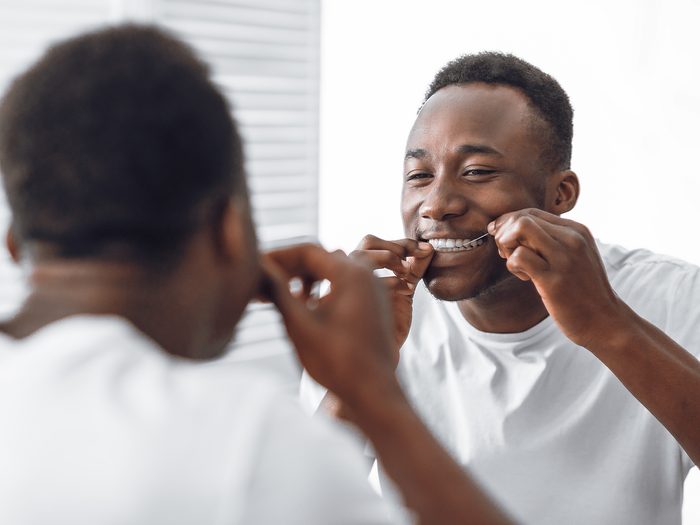
Your dentist is right: Flossing is vital
Yes, it’s about as much fun as cleaning grout, but flossing regularly will do more than keep your smile bright: Flossing seems to help prevent gum disease, and researchers have linked the bacteria that ride along with periodontitis (the official name for gum disease) to an increased risk of stroke, heart disease, some cancers, and even Alzheimer’s disease. And yet, according to Statistics Canada, just over one-third (37.5 per cent) of Canadians both brush their teeth at least twice a day and floss at least once a day.

You’re not flossing enough
It’s best to floss twice a day if you’re serious about preventing gum disease, which along with tooth decay is the biggest threat to dental health, according to the Centers for Disease Control and Prevention. And that’s what your dentist likely will suggest. “My preference is twice a day,” says Chris Strandburg, DDS, a dentist who practices in Santa Monica and Century City, California. “When it comes to oral hygiene, bacteria are the enemy,” he explains. “These bacteria infect our teeth and gums and cause cavities, gum disease, and bad breath.” Since we eat three times a day, we’re constantly adding debris and bacteria to the spaces between our teeth and gums, so removing those threats frequently will keep your mouth healthier, he explains.
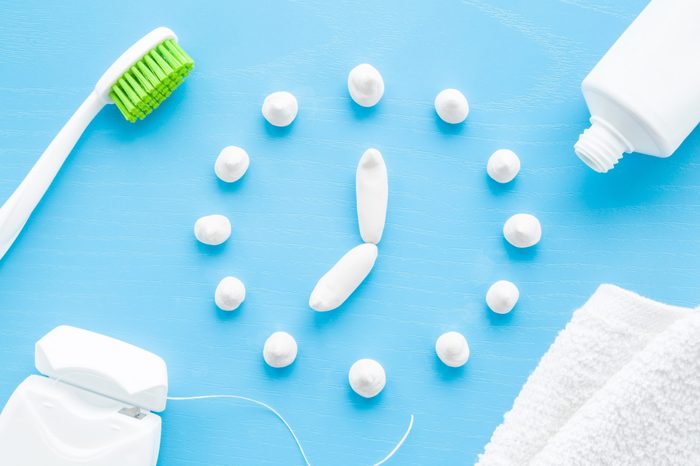
You’re not flossing at the right time
Flossing is an integral part of oral hygiene because brushing does not remove all particles of food and plaque on its own, says Elliott Maser, DDS, a clinical associate professor of pediatric dentistry at the University of Pennsylvania School of Dental Medicine. “Saliva flow decreases when one sleeps, so food material left on the teeth overnight have a great chance of starting a bacterial breakdown process or causing gum inflammation,” he explains. For that reason, you should make sure you floss before bed to remove any bacteria and food particles that may have collected on the teeth throughout the day.
Use these tips to protect your teeth from coffee stains.
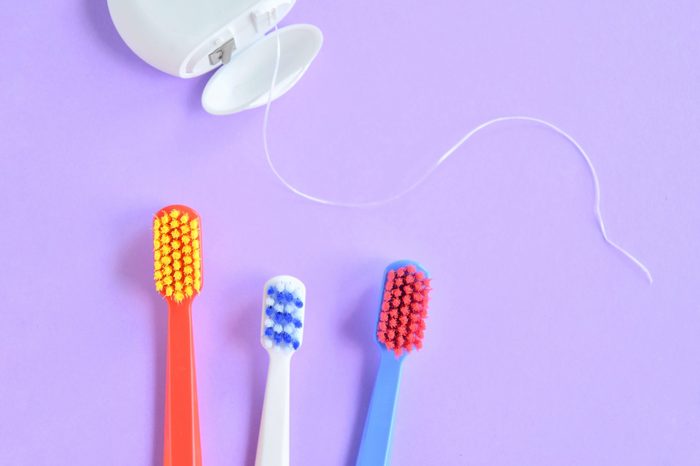
You’re not flossing and brushing in the right order
You’ll make the best use of your effort if you pick up the floss before the brush. According to a small study in the Journal of Periodontology, participants who followed a protocol that involved flossing before brushing had a significantly lower amount of plaque between their teeth than when they brushed first. Dr. Strandberg agrees with this order. “The reason is that when we brush, our goal is to apply fluoride to our tooth surfaces,” he says. “If those tooth surfaces are first cleaned by floss, the fluoride can coat the cleaned area better and is able to protect the surfaces between the teeth.”
Never ignore these signs of a potential dental emergency.
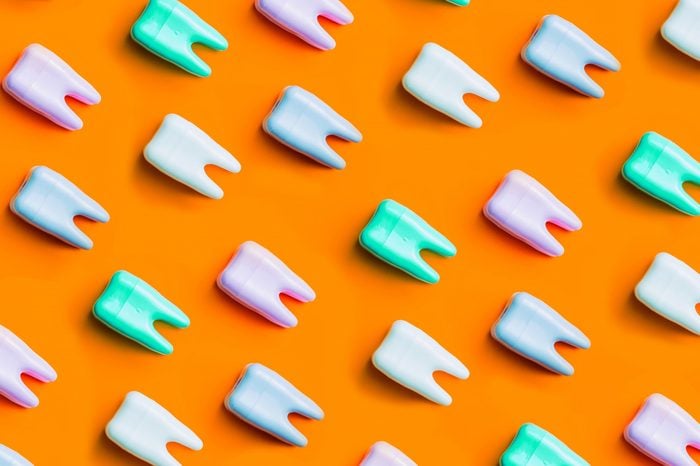
You’re using the wrong type of floss
Not all floss is created equal. To effectively clean your teeth and gums, you need to find the correct type for your teeth. “The floss that performs best depends on the amount of room you have between your teeth, whether you have dental restorations, and whether there are periodontal issues present,” says Inna Chern, DDS, a dentist in New York City. For tight spaces and mouths with a lot of dental work, Dr. Chern recommends a thinner material. If you have larger space between your teeth or more periodontal issues, she likes a fibre which has a larger surface area to aid in cleaning.
This is exactly how long you need to brush your teeth.
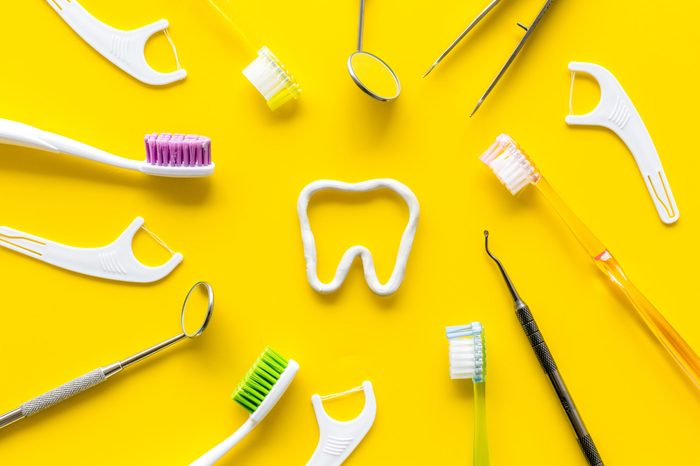
You’re using way too little floss
Grabbing too short a strand of floss will make it difficult for you to do a thorough job. “Using inadequate floss length makes it hard to reach back teeth and patients give up on trying for those areas,” Dr. Chern says. Plus, you need to be able to wind the floss around your fingers so you have a clean area to use between each tooth. The American Dental Association says the best flossing technique is to break an 18-inch piece and wind most of it around one of your middle fingers. Wind the remaining floss around the same finger on your opposite hand, spooling the used floss onto that finger as you clean between your teeth.
Here are the signs of disease your teeth can reveal.
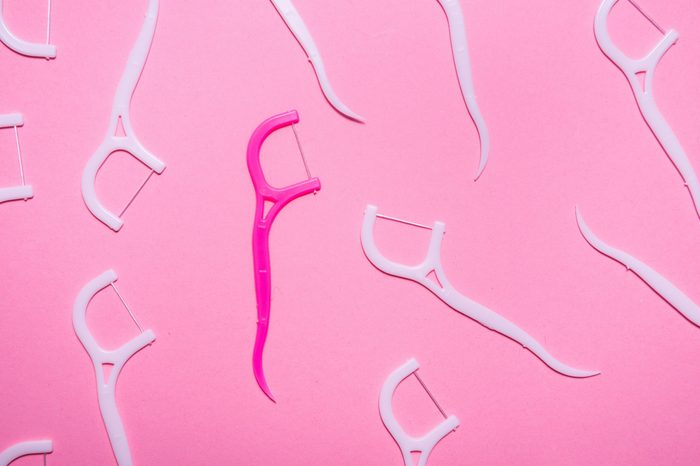
You’re not flossing the whole tooth
You have to wrap the side surface of the tooth with the floss and use the strand as a tool to clean the entire area, not just between the teeth, Dr. Strandburg explains. You’ll want to contour the floss around the tooth in a C shape and slide it up and down, making sure you rub the back of the tooth as well.
Here’s expert advice on how to choose the best toothbrush for you.
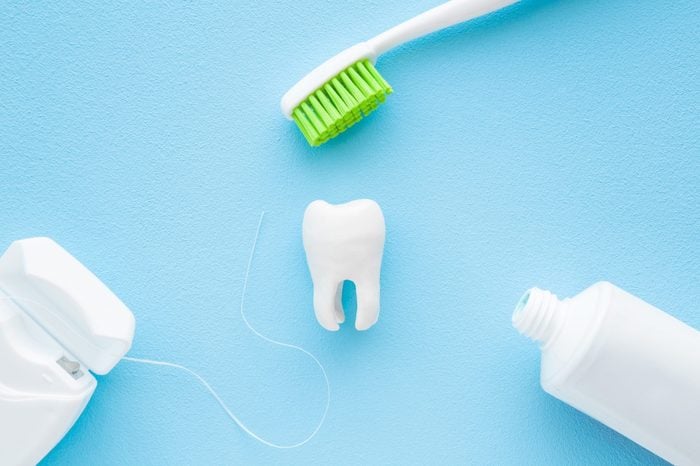
You’re staying above the gumline
“Putting string floss between your teeth doesn’t accomplish the goal,” Dr. Strandburg says. “The string must be carried below the gumline two to three millimeters to remove bacteria. Without this critical step, string floss is useless in combatting gum disease.” The solution is to gently slide the floss up and down the tooth surface and under the gumline to loosen plaque, bacteria, and food particles that may hide in this area.
Find out how to stop grinding your teeth at night.
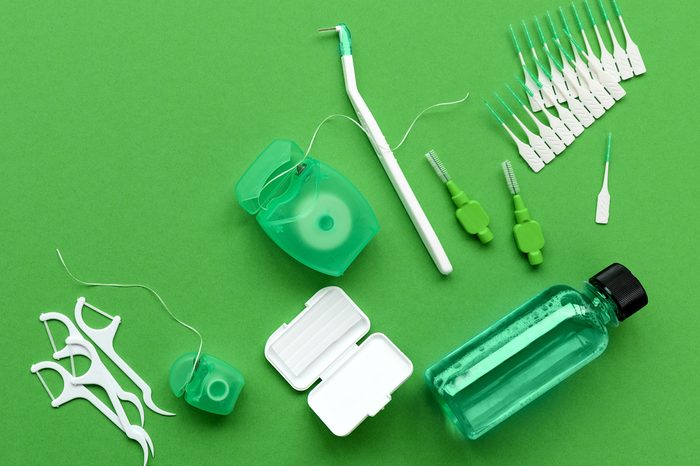
You’re sawing or snapping into your gums
Being too aggressive can damage your gums and cause gingival clefts, which are trauma in the gum tissue, Dr. Maser warns. Once the floss is between your teeth, he advises sliding the floss sideways up the tooth, not sawing at the base of it. And avoid snapping the floss with force into your gums which can cause your gums to recede. You want to work in gentle, smooth motions that don’t traumatize the soft tissue. “If people find it difficult to pull the floss out between the teeth, I advise them to pull it out toward the cheek,” Dr. Chern says.
Here, experts weigh the pros and cons of floss picks vs. regular floss.
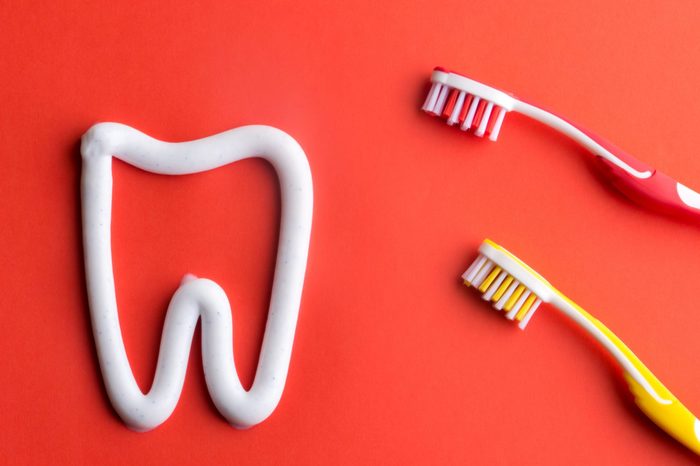
You’re stopping because you see blood
“Maybe the biggest misunderstanding people have is seeing blood when they floss and thinking they should stop,” Dr. Strandburg says. “Actually, bleeding is a sign that your gums are unhealthy and that you should be flossing more and with better form.” When you see blood in the sink, it’s not necessarily a call for concern. “Infected gum material will normally bleed when flossed and this is an indication that one is stimulating the diseased tissue to react and start to shrink and become normal,” Dr. Maser says. Consult your dentist to find out if bleeding is problematic, but the fact that your gums are bleeding isn’t an indicator that you should give up the floss.
Find out how often you should replace your toothbrush (and what could happen if you don’t).
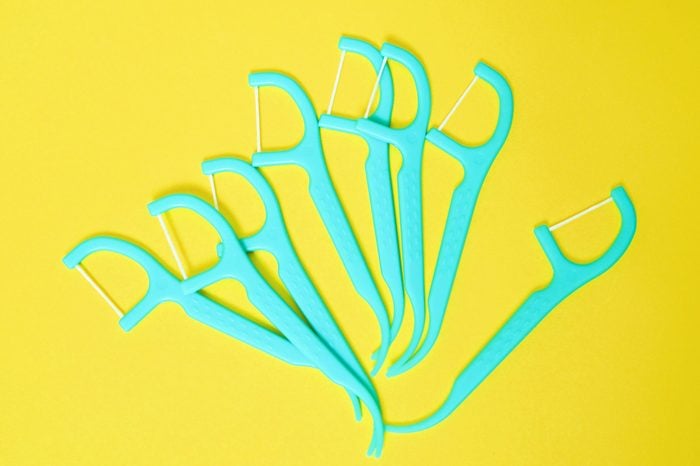
You just can’t reach all the spots
Sometimes your dental work, the size of your mouth, or just limited coordination make flossing an awkward task. “I have been recommending the Waterpik cordless water flosser which can be used in conjunction with flossing for hard to reach areas,” Dr. Chern says. Using a water flosser can replace the standard string because the water reaches deeper areas and breaks up bacterial colonies and flushes them out thoroughly, Dr. Strandburg explains. “It may be easier for the patient to direct a flow of water between the teeth rather than use their fingers and hands to manipulate the floss into the proper position,” Dr. Maser says.
Next, find out 13 secrets dentists want you to know.